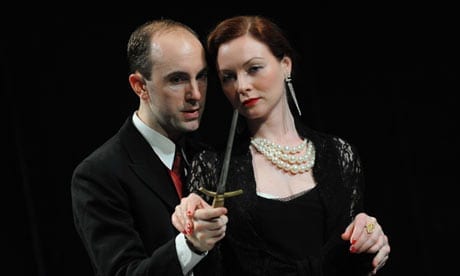The character of the Duchess in John Webster’s Jacobean revenge tragedy is equally as empowering as she is perplexing. The Duchess of Malfi tells the tale of a young widow, the Duchess, who marries the loving Antonio, much to the fury of her brothers. One brother is Ferdinand, the unstable and cruel Duke, who grows increasingly enraged at his rebellious sister due to the incestuous lust he holds for her. The other brother is a Cardinal, a man of high significance in the Catholic Church. But the character of the Cardinal is not one of glory or modesty, with Antonio revealing early in the play that the Cardinal “should have been Pope; but instead… he did bestow bribes so largely and impudently as if he would have carried it away without heaven’s knowledge.” To put his sickeningly evil nature into perspective, the Cardinal kills his mistress by forcing her to kiss a poisoned Bible. In the Italian court of religion, power and corruption, the Duchess is overpowered and defeated. Her role among the strongest female characters in Jacobean theatre is therefore questioned.
The Cardinal and Ferdinand expect the Duchess to remarry, but only to someone of wealth so their inheritance is safe; The Duchess’ marriage to Antonio, as a loving but not overly rich man, is therefore one she must hide. The brothers employ the corrupt and misogynistic Bosola – the closest this play has to a comic relief character – to watch the Duchess’ affairs. The Duchess confuses Bosola’s manipulative tendencies for kindness, allowing him to easily imprison her. But she remains strong even up to her death, before which she bravely states “I am the Duchess of Malfi still.” This is in complete juxtaposition to the erratic reaction of her maid and confidant, Cariola.
There is no doubt that the Duchess is a strong character in this play. She openly defies the orders of her brothers and marries for love rather than reputation. But the reason for her death is her strength in this male-dominated society; the fate of the Duchess either presents the sexist world she must face, regardless of her strength, or is a message from Webster to warn against the rebellion from powerful and dominating men, actually promoting sexism. This is not made clear before the Duchess is killed, but the legacy of the Duchess remains, hinting at the egalitarian former. The death of the Duchess haunts the other characters, with Bosola promising “Revenge for the Duchess of Malfi,” Ferdinand’s final words being “Oh, my sister,” and even the Cardinal proclaiming “How tedious is a guilty conscience.” Her role as the title character is significant, but the Duchess is in no way the protagonist of this revenge tragedy. Regardless of this, it’s interesting to read the development of her character and the characters around her as they become increasingly plagued by her death.
The role of religion is significant, both in the play and in the context of which Webster was writing. The Duchess is a Catholic woman surrounded by influential Catholic men in an overwhelmingly Catholic country, meaning that the main problem of the Church is prominent: there is no equality between the male and female characters. The role of the Cardinal as one of significance in the Church and as a man of deep corruption only increases this. In the anti-Catholic Jacobean England Webster wrote in, religion shapes the character of the Duchess into one the audience must not sympathise with. The question of whether her death is a warning against the strong feminist tones of the play can easily be answered by analysing the role of the Catholic Church in fomenting the weaknesses of the Duchess, ultimately leading to her death.
Words by Caitlin O’Connor
